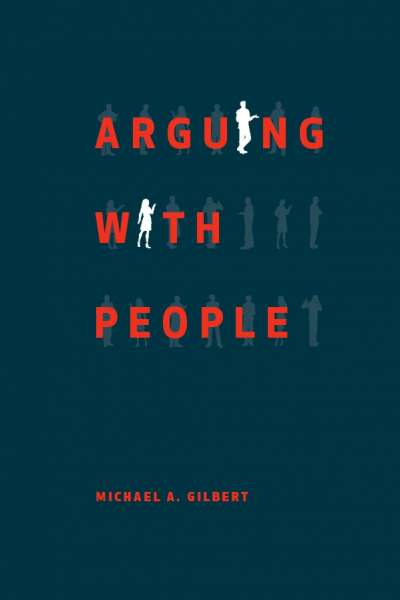The Elements of Arguments introduces such central critical thinking topics as informal fallacies, the difference between validity and truth, basic formal propositional logic, and how to extract arguments from texts. Turetzky aims to prevent common confusions by clearly explaining a number of important distinctions, including propositions vs. propositional attitudes, propositions vs. states of affairs, and logic vs. rhetoric vs. psychology. Exercises are provided throughout, including numerous informal arguments that can be assessed using the skills and strategies presented within the text.
Comments
“Compared to other books in this area I find The Elements of Arguments to be near the top in quality. In terms of teaching to a diverse group of students from varying backgrounds and with different abilities, I find it to be exceptional. The author is extremely sensitive to traditional problems and confusions that surround the subject making it a challenge to teach. He has given the higher education community a standard of the highest caliber with admirable benefit to the students we serve.” — Dennis Brandon, California State University, Northridge
“In a crowded field of introductory texts, The Elements of Arguments stands out. Turetzky has achieved in one volume an admirably clear presentation of both ‘critical thinking’ and ‘logic’ as distinct but overlapping disciplines. Instructors will benefit greatly from the book’s lucid definitions, careful distinctions, and abundant exercises. Students will find their reading rewarded with varied and accessible examples as well as insightful sections relating logic to other fields such as psychology, rhetoric, and the philosophy of language. Using this text, students will be well prepared to handle reasoning and arguments in any subject.” — Tyler Will, Colorado State University
Introduction for Students
Introduction for Instructors
Chapter I: BASIC DEFINITIONS AND STRUCTURE OF THE TEXT
Part I: Arguments
Part II: Some Types of Arguments and Standards of Evaluation
- (A) Standards for Evaluating Arguments
- (B) Standards for Evaluating Deductive Arguments
- (C) Non-Deductive Arguments and Their Standards of Evaluation
Chapter II: PROPOSITIONS
Part I: Truth and Falsity of Propositions
Part II: Identifying Propositions
- (A) Truth and Falsity: Propositions Are Always about Something
- (B) Propositions and Attitudes
- (C) Logic and Psychology
- (D) Facts and Opinions
Part III: Logic and Rhetoric
- (A) The Importance of Logic and Critical Thinking
- (B) Persuasive Language
Part IV: Informal Fallacies
- (A) Appeals to Motives or Emotion in Place of Support
- (B) Appeal to Authority
- (C) Attacking the Person: Ad hominem Arguments
- (D) The Subjectivist Fallacy (or Relativist Fallacy)
Exercises: Informal Fallacies
Chapter III: COMPOUND PROPOSITIONS AND TRUTH FUNCTIONAL CONNECTIVES
Part I: Logical Negation
Part II: Logical Conjunction
- Informal Fallacy: Complex Question
Part III: Logical Disjunction
- Informal Fallacy: False Dilemma
Part IV: Truth Functional Conditionals
- (A) Various Uses of Conditionals
- (B) Truth Functional Conditionals
- (C) Necessary and Sufficient Conditions
- (D) Identifying Conditionals
- (E) Truth Functional Biconditionals and Definitions
- (F) Informal Fallacy: Slippery Slope
Summary of the Logical Operator and Logical Connectives: Their Symbols, Rules, and Truth Tables
Exercises
Appendix: Valid Forms of Categorical Syllogisms
Chapter IV: LOGICAL RELATIONS
Part I: Definitions of Some Logical Relations
- (A) Logically Inconsistent Propositions
- (B) Tautologies, Logically Consistent Propositions, and Contingent Propositions
- (C) Logical Implication
- (D) Logical Equivalence
Part II: Modal Concepts
- (A) Modal Concepts and Logical Relations
- (B) Implications among Modalities
- (C) Different Types of Possibility and Impossibility
Part III: Informal Fallacies of Equivocation
Exercises: Informal Fallacies
Chapter V: ARGUMENT FORMS AND THEIR EVALUATION
Part I: Argument Forms
Part II: Testing for Validity
- (A) Using Truth Tables to Determine Validity
- (B) A Shorter Procedure for Determining Validity
- (C) Some Standard Argument Forms
- (D) Testing the Validity of More Complex Argument Forms
Part III: From Validity to Soundness
- (A) Providing Arguments That Support the Premises of an Argument
- (B) Assessing Unsupported Premises
- (C) Accepting an Argument’s Premises Provisionally as Suppositions
Exercises: Tests of Validity
Appendix: The Validity of the Argument Forms for Testing the Adequacy of Definitional Propositions
Chapter VI: ARGUMENTS IN ORDINARY LANGUAGE
Part I: Identifying Arguments
Part II: Diagramming the Flow of Premises and Conclusions
Part III: Principles of Interpretation: Enthymemes
- Informal Fallacy: The Straw Man Fallacy
- Steps for Argument Analysis
Part IV: Argument Assessment Strategies
- (A) Assessing the Validity of Arguments in Ordinary English
- (B) Assessing Inductive Arguments
Exercises: Complete Argument Analyses
Philip Turetzky taught philosophy at Colorado State University, the University of South Dakota, Ripon College, and other post-secondary institutions. He is the author of Time (Routledge, 1998) and numerous academic articles.












